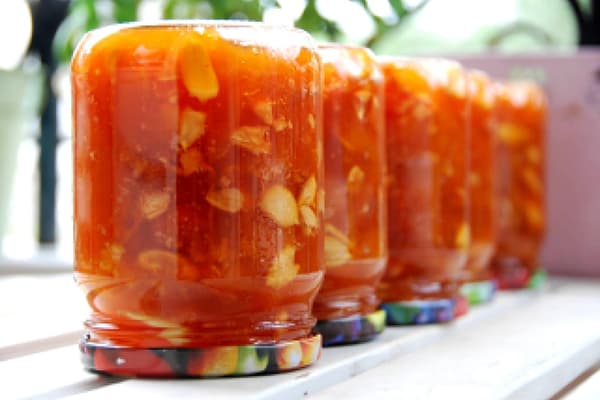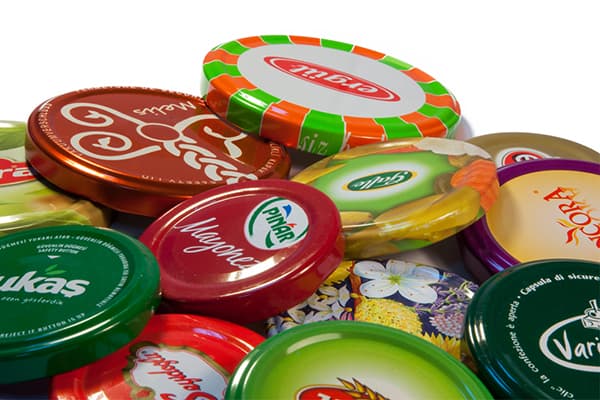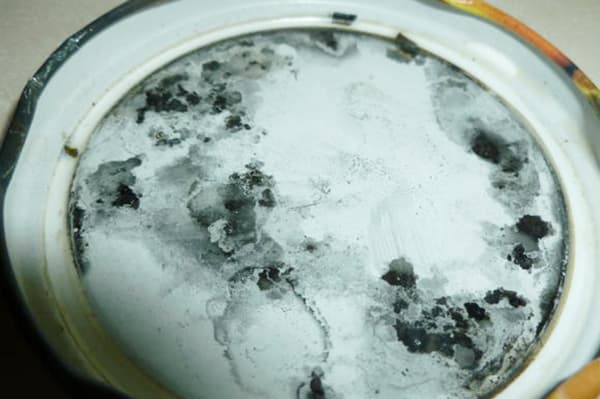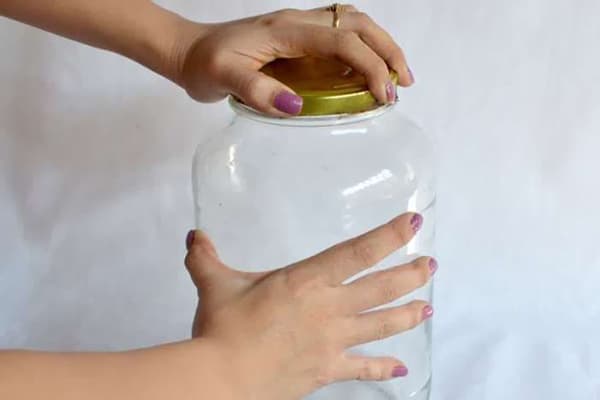Can jar lids be reused?
The twist-off screw cap is a real godsend for canning: they allow you to roll up food without a special key machine. But many housewives ask, is it possible to reuse screw caps? First of all, it depends on the quality and strength of the tin. It is important that the integrity of the thread and the coating inside is not compromised. For this purpose, the products are carefully inspected. And if everything is in order, use it for seaming again.

Reuse
Screw caps are called Twist Off, which literally translates from English as “turn and remove.” They replaced Soviet-style products and were immediately loved by housewives: they make it easy to close jars and open them with a twist of the hand. If the cap is intact, you can wash it, sterilize it and reuse it.
Today, screw caps and twist-off jars are widely used in industry. Mustard, tomato paste, baby food, and various canned foods are sealed in them. After the product is eaten, many housewives wash the container and close their own homemade preserves in it.
Among the twist-off containers there is even its own rating. The best mustard caps are “Red Price” and “Pyaterochka”. The second place in the rating goes to the baby food Honeu Kid and “Babushkino Lukoshka”, and the last place goes to “Toptyzhka”, the lids of which in 20% of cases allow air to pass through when reused.
If the product appears to be of questionable quality, it is better to replace it with a new one. Fortunately, finding new screw caps is not difficult, and they are inexpensive. One piece will cost about 10 rubles. But here one drawback of twist-off products comes to light - the threads must match completely, otherwise the seaming will turn out to be leaky.
To preserve sour fruits, use only lids with a varnished coating on the inside. Unvarnished tin reacts with acids, causing the preservation to acquire a metallic taste and an inky purple color.
Be careful - marriage!
Screw-on lids provide high-quality canning of fruits, jams, and mushrooms. But in order for the jar to close hermetically, they must be intact.
Contraindications for reuse:
- presence of chips;
- dents;
- rust;
- permanent stains;
- curvature of the side;
- broken thread;
- peeling coating inside.
Damaged lids should not be used for canning. But they can be used to close jars with bulk products, such as spices.
Aptitude test
An incorrectly selected screw cap can easily cause damage to the preserved product. If the seal is broken, microorganisms will begin to multiply in the jar, which will turn the product into poison.
Before using an old product, you need to not only inspect it carefully, but also conduct a test:
- Pour water into the jar and screw on the lid.
- Now turn it upside down. If no water has leaked out, the product can be reused.
If only the protrusions on the cover are bent, but in general it is as good as new, the defect can be corrected.To do this, you should arm yourself with a tablespoon and carefully bend the edges that fit around the neck of the jar inward. Don't rush to bend them too much. Bend it a little, check for leaks - and if necessary, bend it again.
So, you can reuse screw caps if they are not deformed. On average, it turns out to use them for canning 3-4 times. Gradually, the thread twists, bends, and the varnish coating is damaged. In this case, the covers are replaced with new ones. Remember that the stronger the tin, the longer the product will last.



It’s even better to cover the neck of the jar with ordinary plastic film before screwing.
it ensures a tighter fit of the lid and easier unscrewing.
Bullshit, no polyethylene is needed! Plastisol (a strip along the edge on the inside) will do everything itself.When the lid is heated, it becomes softer and fits perfectly to the rim of the jar.
There are two types of plastisol for sterilization at the capping temperature
120 degrees and for pasteurization the temperature is up to 110. It is difficult to determine by eye; for pasteurization it is usually darker; they are used in household canning. With plastisol up to 120 degrees, they are usually used in industrial production. Housewives can use both, first keeping them in boiling water before capping.
Class
After sterilizing the lids and jars in steam or boiling water for 10-15 minutes, hot preserves are poured into warm jars. Quickly wipe the threads with a clean cloth.
Having covered, I turn the lid with pressure counterclockwise until 3-4 clicks and then sharply tighten it clockwise. The petals of the lid move into the desired elastic position ensuring a tight seal.
Twist Off lids will be easier to use if you don't get the edges of the jars dirty when canning. For this I have a special funnel with an extended neck. Through this funnel I put boiling jam, squash caviar, etc. into a hot sterilized jar. The edges of the jar (by the way, the threads too) remain clean, which makes opening the jar very easy in the future, and the lid remains absolutely clean. By the way, on the packaging of Twist Off lids it is written that after rolling they do not need to be turned over. It’s a pity that you can’t post a photo of the label with these instructions here.
I only use screw caps once, as they are always used for preservation with vinegar. and it’s safer than worrying about the secondary later: “will it swell or not?” It will be a pity for both the work and the product. There were just precedents before, but now I’m smart. =))
I now always do a test before using lids. So that it doesn’t hurt when you spend a lot of effort on preservation, and the lid swells.